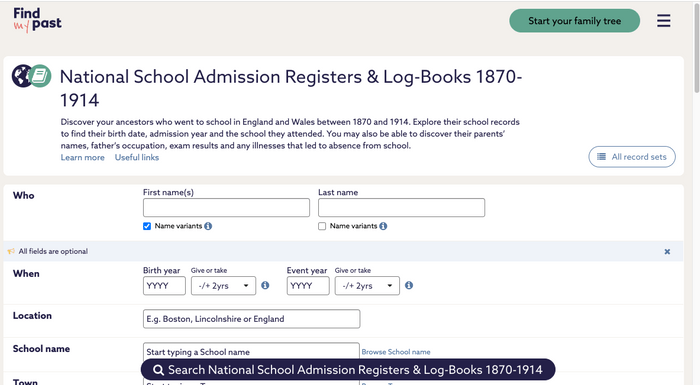Old school records can provide some fascinating details about an ancestor’s educational background, and they can also be an interesting window into the community in which they lived. Schools existed as voluntary, church and parish bodies, and many may even be found in the records of a nonconformist church. To begin your research, check out The National Archives at Kew (TNA) website. You can also find guides and other information related to these archives at the TNA website.
Ancestry
There are a few different ways to search for your education history in the UK. The National Archives has information on teachers and national schools. If you are unsure how to find your education history, Jonathan Scott, freelance writer and family history expert, offers some advice. There are also various ways to find your education history on Ancestry. You can also look up records on your own at a local library.
Ancestry is an excellent resource for finding school records, especially if you don’t have time to visit record offices or libraries. Although you cannot access individual school records in the UK, some records are available at the National Archives at Kew. This collection covers primary and secondary schools from 1854 to 1984. If you’re looking for elementary school records, you can search series ED161.
Church of England
After the Act of Uniformity, religious dissenters started academies to educate the children of dissenting families. One of the oldest dissenting academies is the Bristol Baptist College, and several Oxford colleges are descendants of such academies. Until the late nineteenth century, many schoolmasters were required to be in holy orders. Dame schools and informal village schools generally employed schoolmistresses who taught the three Rs.
Church of England Records Centre is the clearinghouse for all central records of the church. The collection includes records from the National Society, a voluntary educational organization founded in 1811 to improve elementary education. The Archives also hold the records of the Froebel Society, which supported infant and child education. If you are interested in the history of your education, this will help you uncover your ancestor’s early education.
The Church of England is similar to Roman Catholicism in many respects, but it retains a more hierarchical form of government. Unlike the Puritan churches of the New World, the Church of England’s hierarchy is still dominated by ascending bodies of clergy led by archbishops and bishops. However, in the American colonies, the church lacked a bishop and delegated authority to local church vestries composed of eminent laymen.
Haringey Archive
To start your research into the local history of Haringey, you should first understand what the borough is. Haringey is a borough of London that was formed in 1965 by merging three previous boroughs, including Enfield. This borough also includes the London Borough of Waltham Forest. Its borders include Waltham Forest, Islington, and Camden, so learning about its history can be very valuable.
The name of the borough is a variation of the Saxon towns of Hornsey and Tottenham. The latter was the name of a local chief, Haering. The names have changed over the years, but the borough still retains some of its historic municipal divisions. The borough is split along its old boundary lines, a testament to the relative prosperity of the borough. The official seat of the Haringey council is the Civic Centre.
The Borough Council adopted a report in June 2007 that recommended a system of ‘bands’ to ensure that all students receive the best possible education. While the intention was to improve the education system, people expressed skepticism and questioned the high proportion of immigrants in the district. As a result, half of the district’s schools will be made up of West Indians, a group with lower I.Q. than the English. Academic standards will therefore be lower in these schools.

